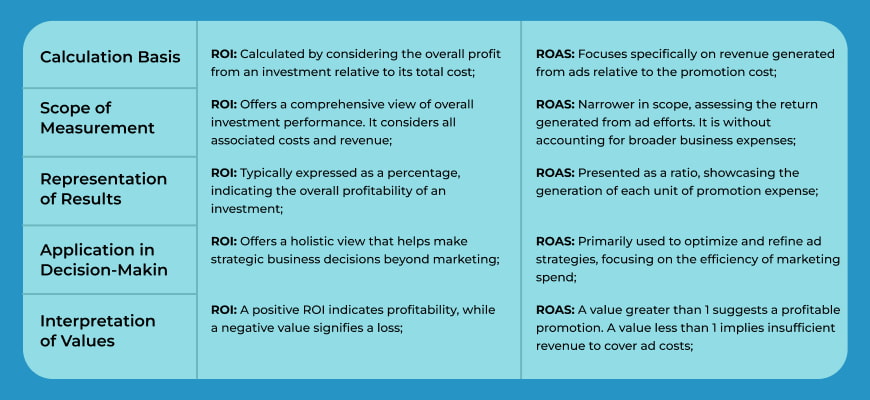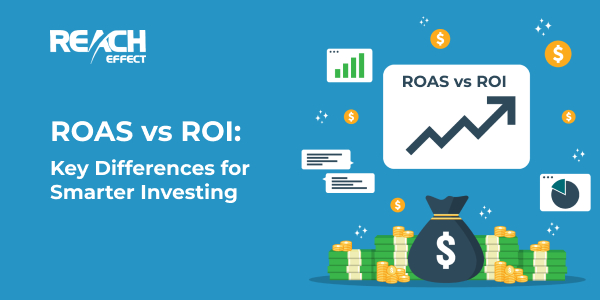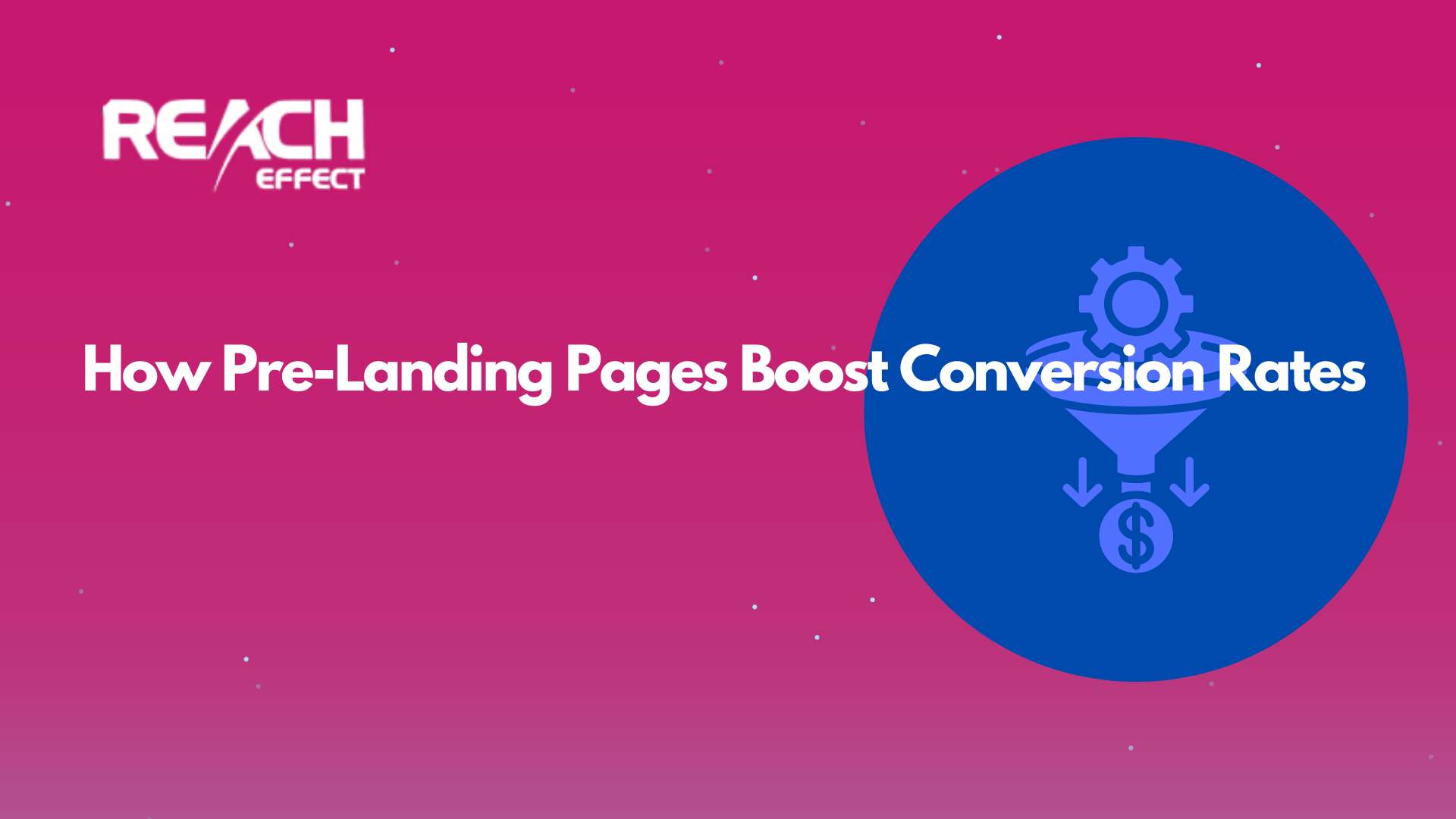Our guide delves into the nuances of ROAS and ROI. We shed light on their key differences and offer insights. They empower businesses and marketers to achieve more innovative investment strategies. Join us on this journey as we unravel the intricacies of ROAS vs ROI and navigate the path to wiser investments.
Thank you for reading this post, don't forget to subscribe!Understanding ROAS (Return on Ad Spend)
It is a crucial web marketing and advertising metric. It quantifies the revenue generated for every dollar spent on promotion. Essentially, ROAS measures the effectiveness of a particular ad campaign. It happens by evaluating the relationship between the amount invested in ads and the resulting income. To calculate the ROAS formula, you must divide advertising revenue by promotion cost. This metric clearly shows how effectively your budget converts into revenue. A ROAS value greater than 1 indicates that the campaign generates more income than its advert costs. It signals a positive return on investment.
Understanding ROI (Return on Investment)
It is a financial indicator used to test the profitability and efficiency of an investment. It measures the gain or loss generated relative to the asset’s cost. The formula is straightforward:
ROI = Net income / Cost of Investment x 100.
Key points about ROI:
- Net Profit: It represents the investment’s total revenue minus its cost.
- Cost of Investment: This includes all expenses related to the investment. It includes initial costs, operating expenses, and any additional charges incurred.
- Percentage Form: ROI is usually expressed as a percentage by multiplying the result by 100.
A positive ROI indicates a profitable investment, while a negative one implies a loss.
ROAS vs ROI: Breaking Down the Differences

Understanding the difference between ROI and ROAS is pivotal. Here’s a breakdown of the critical odds:
- Calculation Basis:
- ROI: Calculated by considering the overall profit from an investment relative to its total cost.
- ROAS: Focuses specifically on revenue generated from ads relative to the promotion cost.
- Scope of Measurement:
- ROI: Offers a comprehensive view of overall investment performance. It considers all associated costs and revenue.
- ROAS: Narrower in scope, assessing the return generated from ad efforts. It is without accounting for broader business expenses.
- Representation of Results:
- ROI: Typically expressed as a percentage, indicating the overall profitability of an investment.
- ROAS: Presented as a ratio, showcasing the generation of each unit of promotion expense.
- Application in Decision-Making:
- ROI: Offers a holistic view that helps make strategic business decisions beyond marketing.
- ROAS: Primarily used to optimize and refine ad strategies, focusing on the efficiency of marketing spend.
- Interpretation of Values:
- ROI: A positive ROI indicates profitability, while a negative value signifies a loss.
- ROAS: A value greater than 1 suggests a profitable promotion. A value less than 1 implies insufficient revenue to cover ad costs.
Knowing the difference between ROI and ROAS helps to make informed decisions based on specific insights.
Conclusion
In the comparison of ROAS vs ROI, understanding these metrics is pivotal. To leverage these insights effectively, take the next step with our platform. Make a deposit, activate your presence, and unlock the potential of ReachEffect traffic today!










